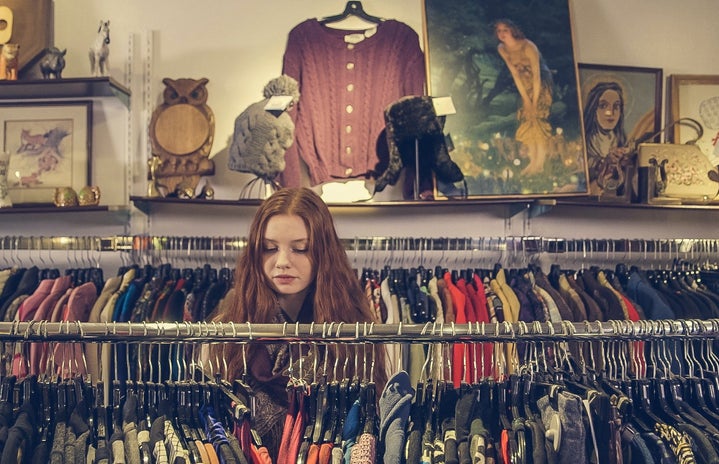In recent years, thrifting has become increasingly trendy. Simultaneously, the popularity of fast fashion brands has been on the rise. While people tend to find statement pieces at the thrift store, they run to places like Shein, Forever21 and Urban Outfitters for basics and other closet staples. There is so much overconsumption of clothing in first world countries, which results in underdeveloped nations and our environment dealing with the consequences. We need to shift our focus from purchasing hundreds of dollars of cheaply-made clothing to repurposing and saving the second-hand, pre-loved clothing that is filling thrift stores.
I often see people online argue that over-shopping at thrift stores takes away clothing from the underprivileged and raises the price of the goods, which is an easily refuted statement. While thrift stores were created to assist people living in poverty, the act of anyone shopping at second-hand stores benefits multiple parties. The charities and organizations the stores donate their profits to, the jobs created due to the increased demand and the environment due to the decrease in waste. Shopping at secondhand stores is beneficial to the underprivileged, but the progressive effects it has on the environment are crucial. In present times, there is an extreme surplus of clothing in the world. According to The Environmental Protection Agency, 84 percent of donated clothing ends up in landfills. If we start purchasing more of our clothing secondhand, the amount of clothing in landfills will decrease, which will also lower the excessive demand for fast fashion.
While the economical and environmental effects of shopping sustainably are very important, there is also an effect on personal style. When shopping at a thrift store versus a big-name manufacturer, you are allowed more fashion freedom. Instead of buying preselected, cheaply made microtrends, in thrift stores and second-hand boutiques you are forced to use your creativity. I know from personal experience when I started thrifting the majority of my wardrobe, my taste and style were transformed. Style is subjective after all, but I find the inspiration you get sifting through clothes from each decade in fashion a lot different than scrolling through a website of pre-selected styles.
Fast fashion is a large threat to our environment, and now more than ever due to the creation of websites like Shein and Zaful. In an article by The Business of Fashion, it is revealed that Shein added 314,877 new styles in the past year, while the next most polluting brand released 18,343. There is no reason and no need for that much clothing to be created. Most of the time, fast fashion consumers are applauding the convenience and the cheapness of the clothing without understanding what else they are supporting. Sweatshop labor and underpaid, overworked employees are a common trend amongst big-name brands. By shopping with these companies, you are aiding this malicious business practice, and creating a demand for more of it. There are a plethora of things we need to change in our world to decrease waste and to help recover our environment, but shopping for clothing sustainably is an easy start. It saves you money, benefits people in need and our environment and takes support away from immoral businesses.



